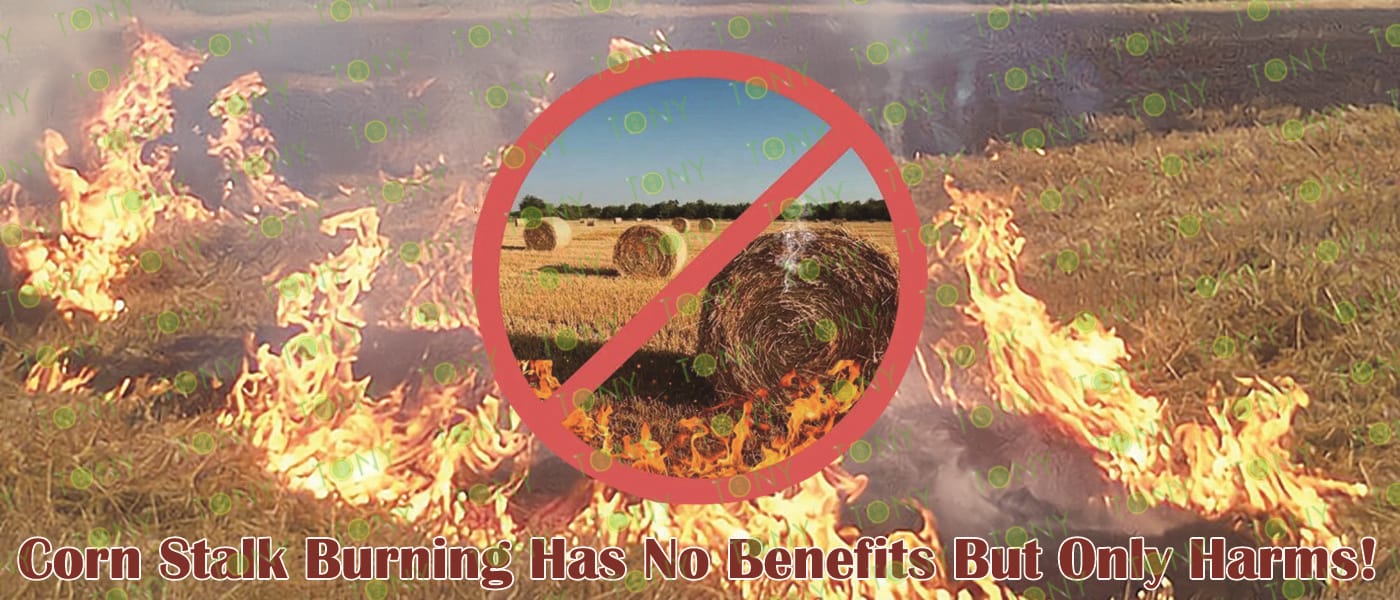Straw is a common waste in agricultural production. Farmers usually deal with straw by simply burning it. However, in recent years, people have gradually realized the harm that burning straw brings to the environment and health, and have begun to look for new ways to utilize straw.
So, what are the harms of burning straw to the environment? What are the ways to turn straw from waste into treasure?
The stacking and burning of straw have become one of the main sources of pollution in rural areas. Not only that, but it is even more harmful for farmers to burn straw directly in the farmland.
Burning straw will cause the ground temperature to rise sharply, which can directly kill and scald the beneficial microorganisms in the soil. The alkalinity of the soil will also increase as a result, leading to compaction of the cultivated land, affecting the full absorption of soil nutrients by crops, directly impacting the yield and quality of farmland crops, and affecting agricultural income.

Not only will the quality of farmers' own land decline, but also a lot of thick smoke will be produced when burning. Experts introduce that this kind of thick smoke contains organic aerosols and other particulate matter, which can form PM2.5 and cause the air pollution to worsen in a very short time.
Inhaling polluted air is extremely harmful to both those who burn straw and others. People are prone to respiratory diseases when they are in smoggy weather. Long-term inhalation may even lead to an increase in the incidence of lung cancer.
From this, it can be seen that burning straw is both harmful to others and oneself. So, apart from this "crude" method of simply burning and discarding, what other ways are there to deal with straw and reuse it at the same time?
First of all, returning straw to the field is a good choice, and it is also good for use as fuel. The first step in utilizing crop straw is to return it to the fields.
Returning straw to the field can increase the organic matter content of the soil, improve the soil aggregate structure and physical and chemical properties, and enhance soil fertility. Biomass pellet fuel can also be produced nearby from straw.
Biomass pellet fuel is produced by using a straw pellet machine to process straw and various other crop stalks into pellets of uniform length and thickness.
The pellet fuel processed by TONY straw pellet machine has the advantages of high specific gravity, high calorific value, good combustion, low cost, convenient use, cleanliness and hygiene, and is easy to store and transport. Small specialized boilers used in hotels, guesthouses and bathhouses can save about half of the cost compared with fuel such as oil and steam, and are comparable to the cost of using coal. Moreover, this kind of biomass fuel does not produce sulfur dioxide when burned and does not pollute the urban environment and air.
To produce biomass pellets, one must first have a stable, efficient and cost-effective device. The types of biomass pellet machine produced by TONY Company, such as straw pellet machine, wood chip pellet machine, and rice husk pellet machine, precisely meet the requirements of the majority of customers and are the ideal models in their minds. Action speaks louder than words. Hurry up and take your straw pellet machine away from TONY Company.





















